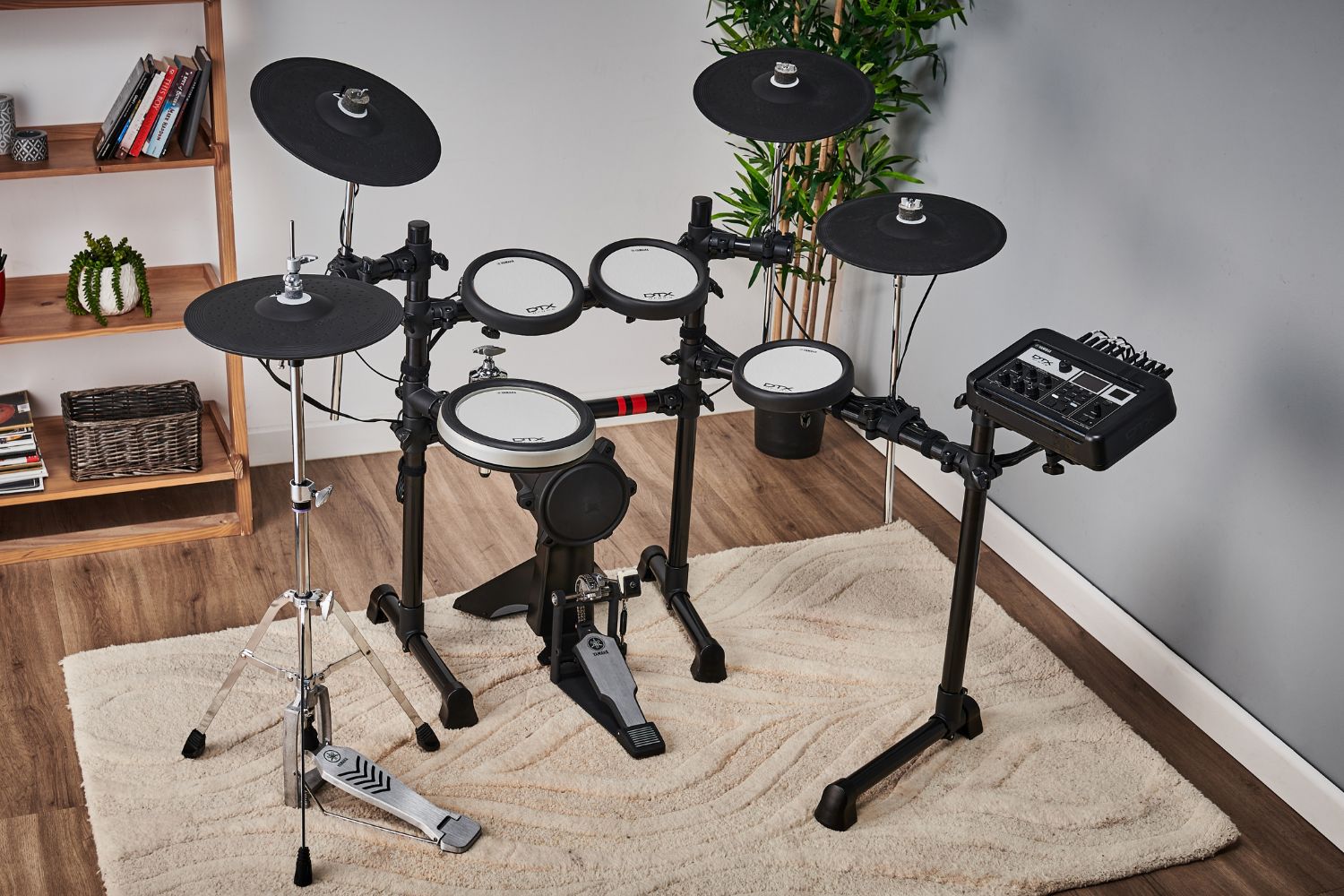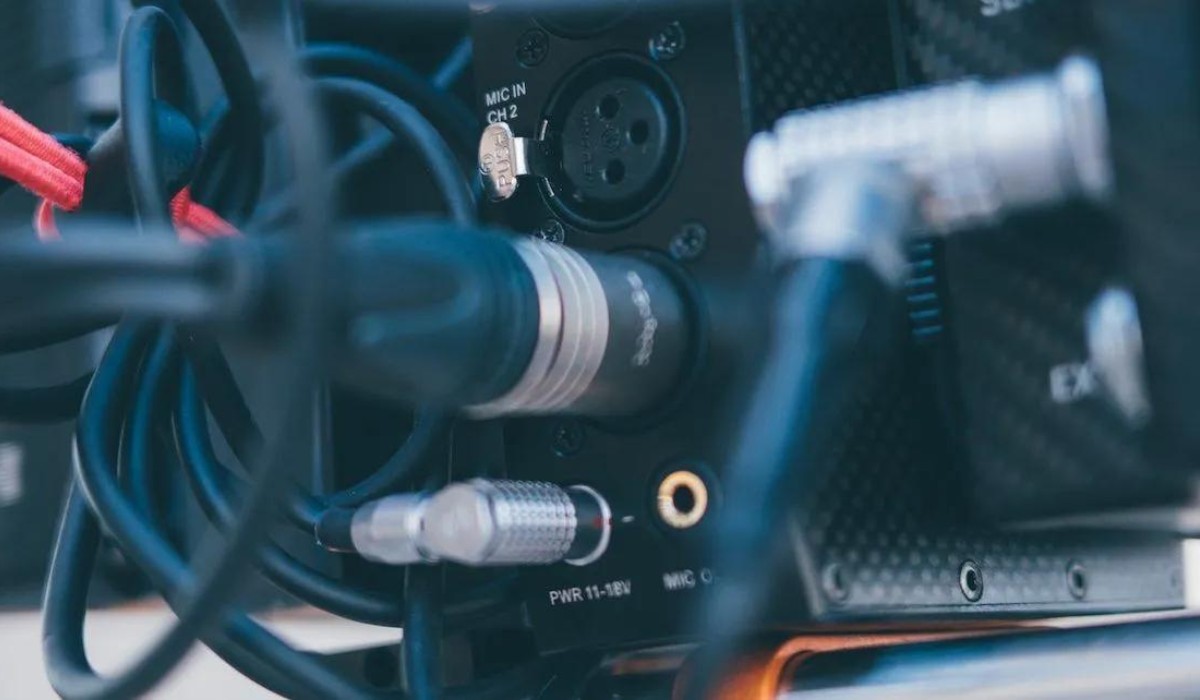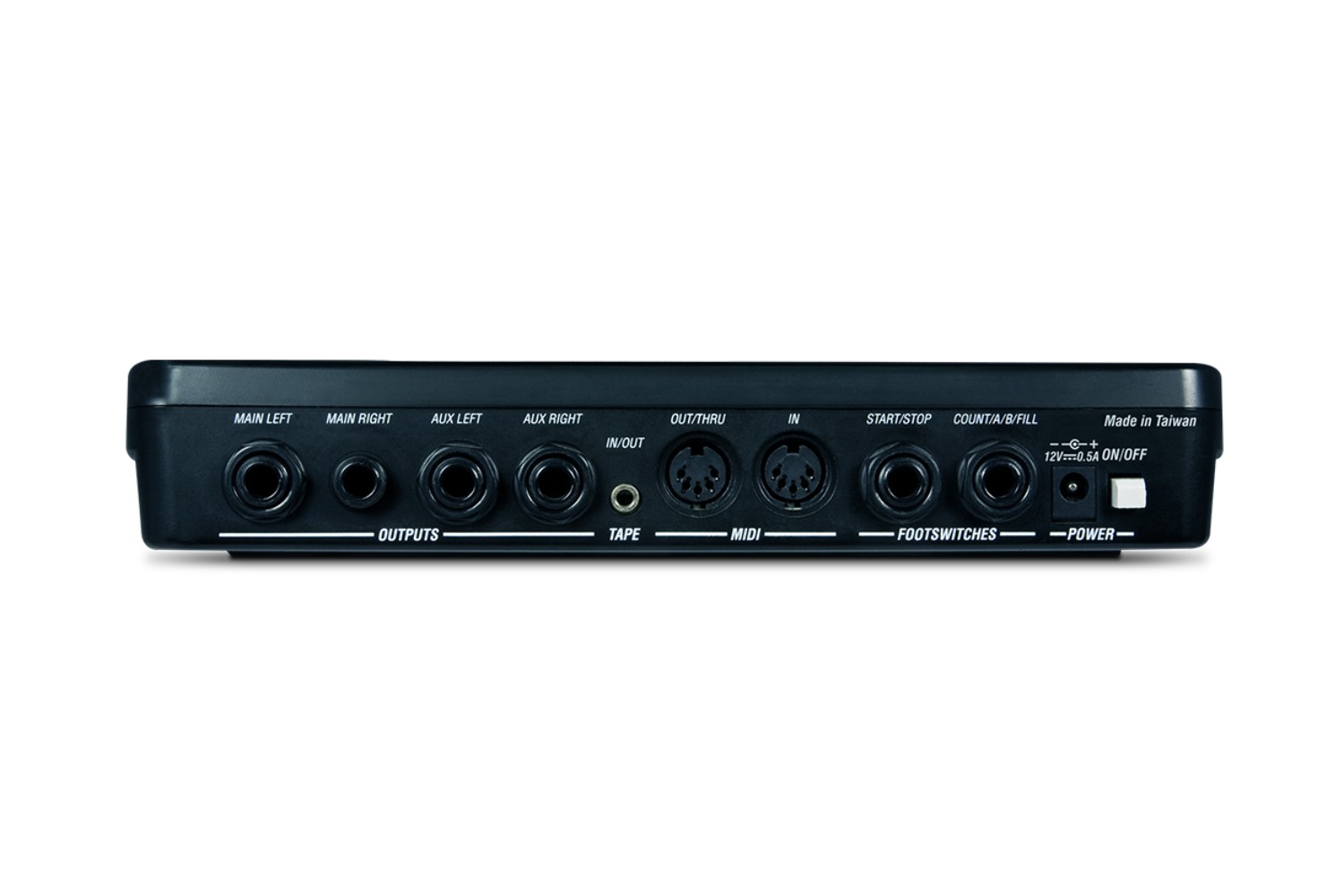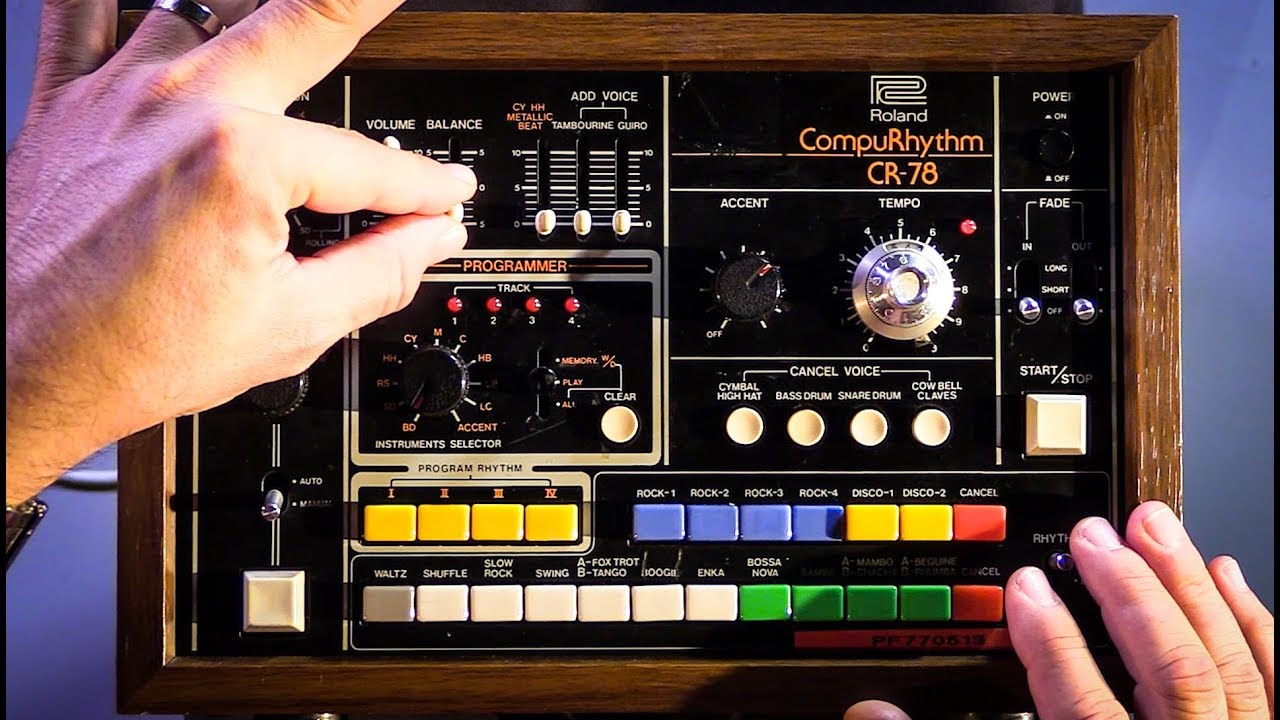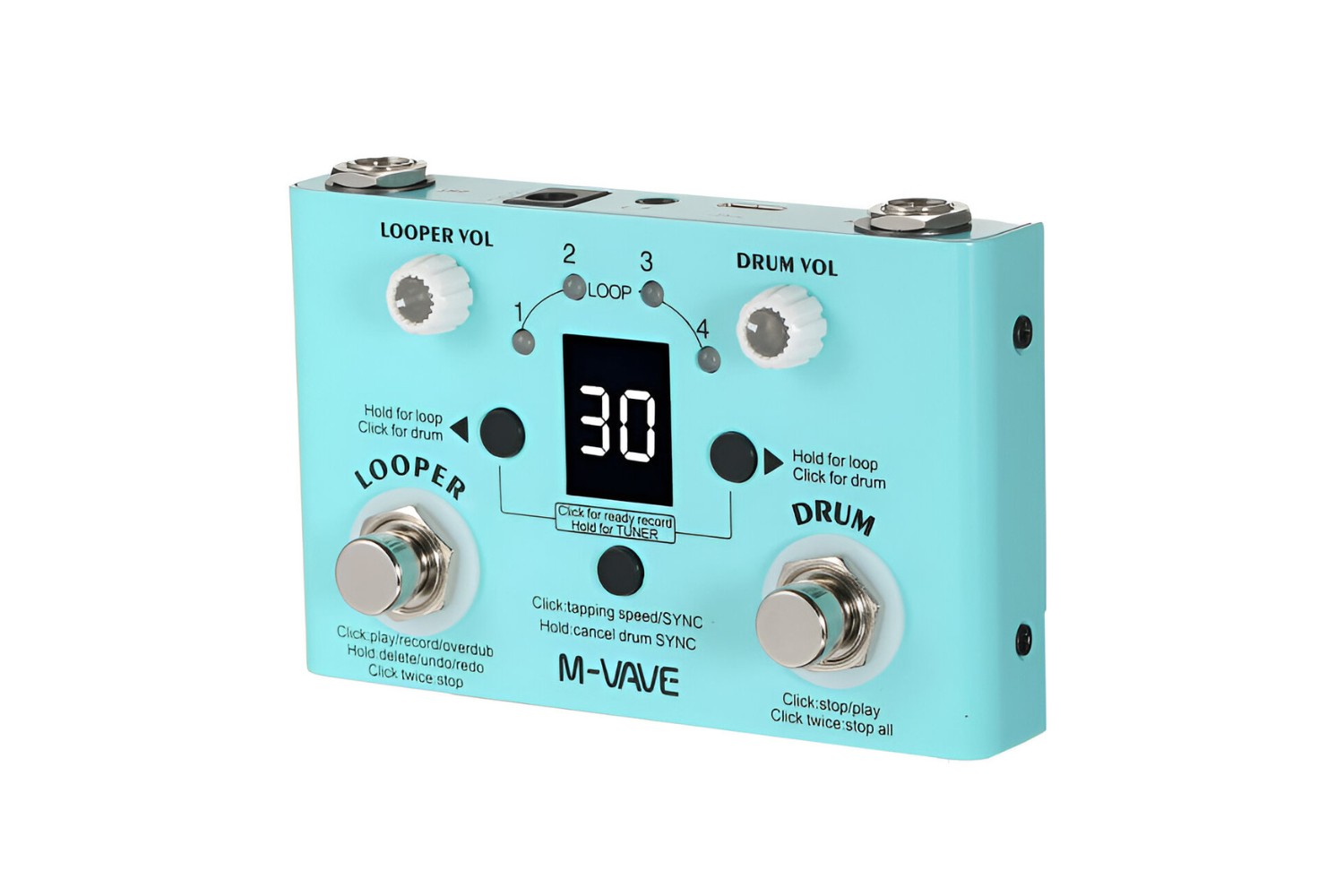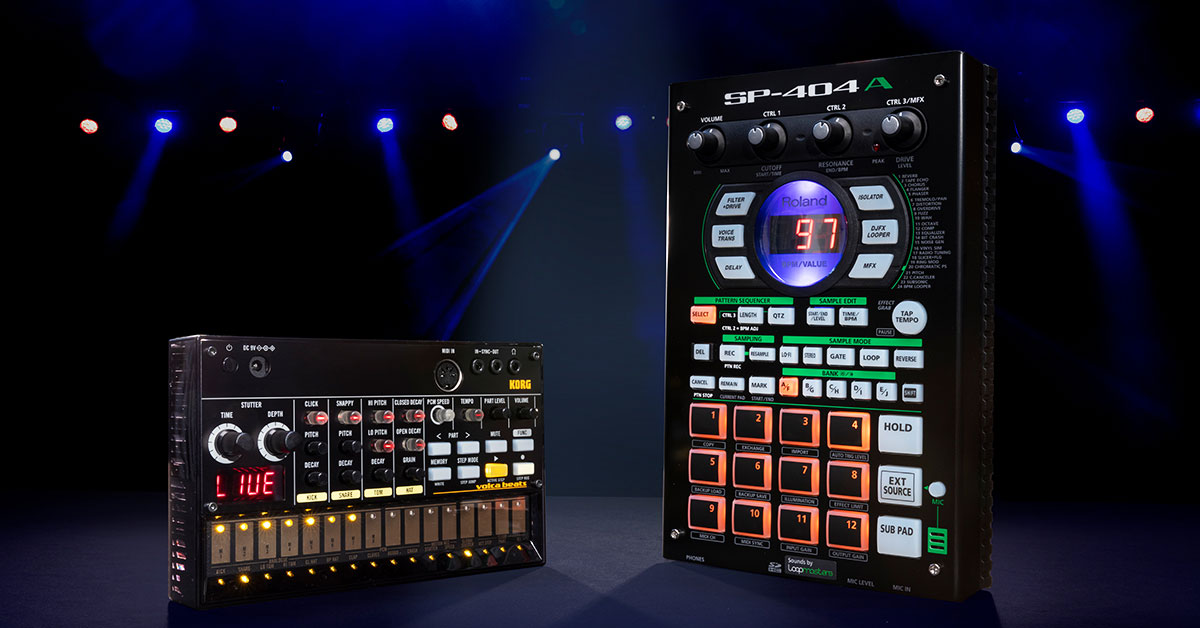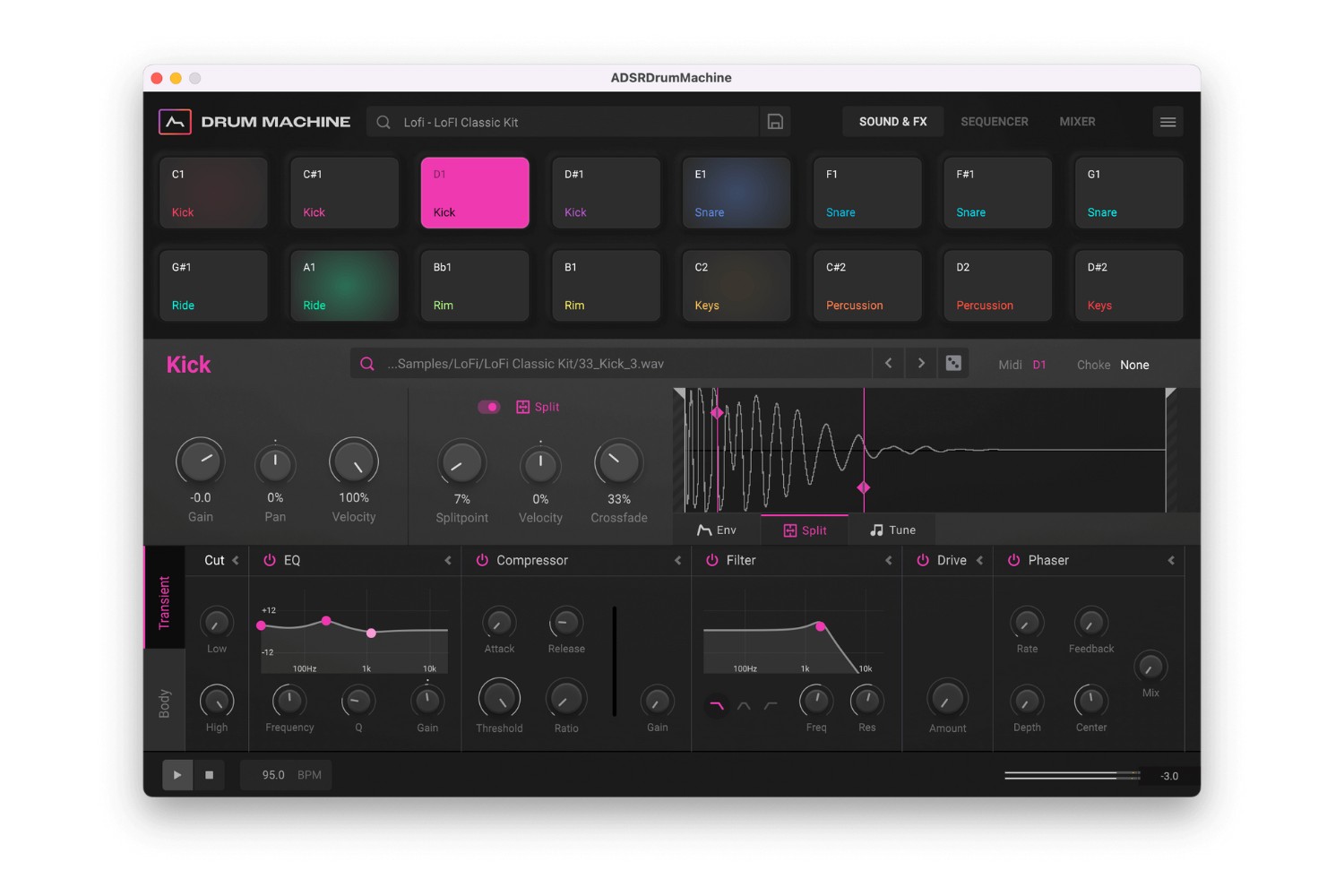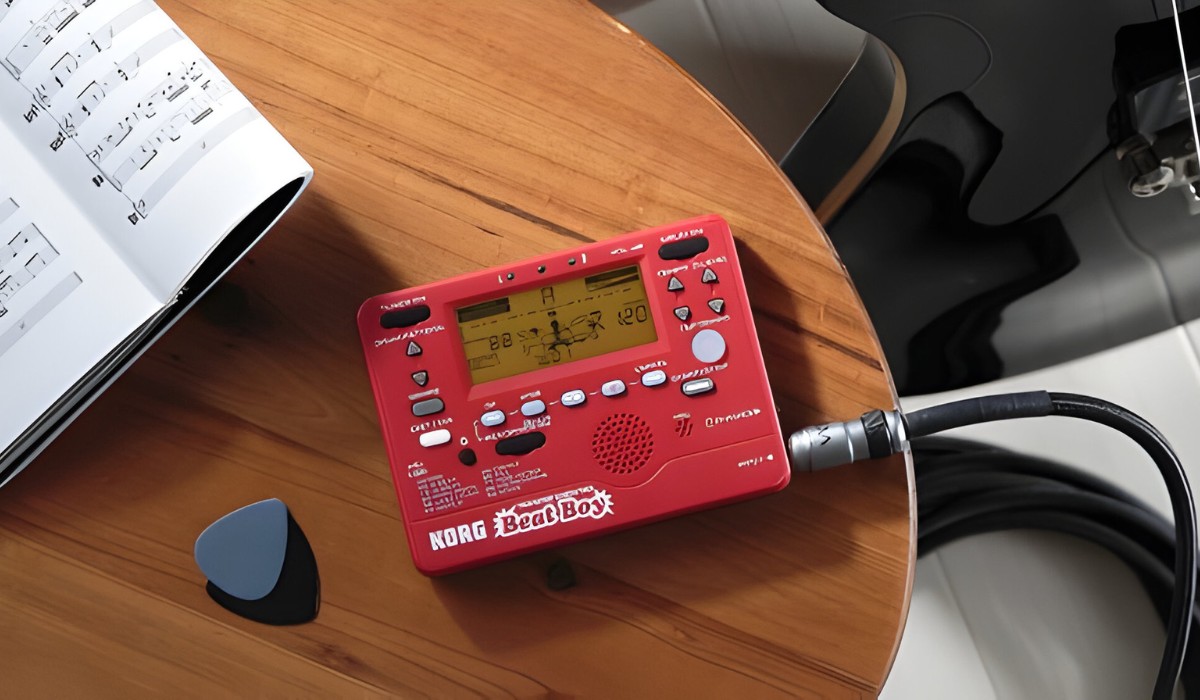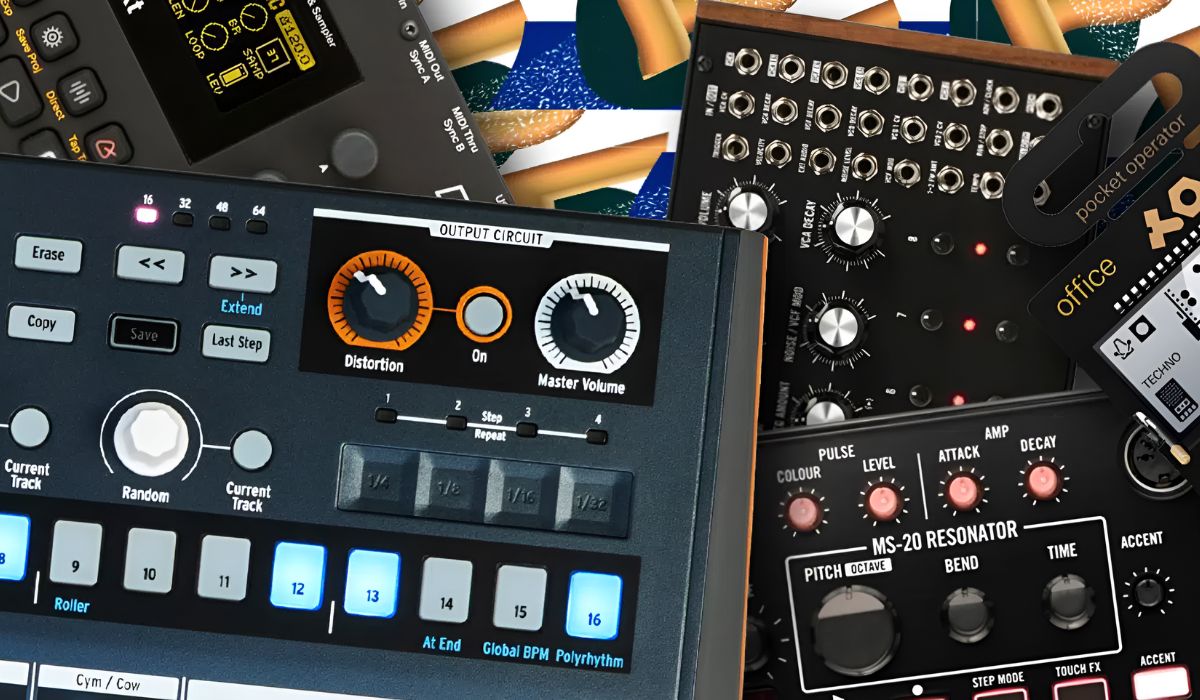Introduction
Introduction
Are you an aspiring drummer looking to enhance your skills and creativity? Or perhaps you're a seasoned musician seeking a versatile tool to elevate your practice sessions? Whether you're a beginner or an experienced player, a drum machine can be an invaluable asset in your musical journey. This innovative device offers a wide range of features to help you develop your rhythmic abilities, experiment with diverse beats, and fine-tune your timing. In this comprehensive guide, we'll explore the fundamentals of using a drum machine, from selecting the right model to practicing various rhythms and integrating this powerful tool into your daily routine.
A drum machine is a electronic musical instrument that can replicate the sound of drums and percussion instruments. It provides a convenient and portable way to create and play rhythmic patterns, making it an essential tool for drummers, producers, and musicians across genres. Whether you're interested in rock, jazz, hip-hop, or electronic music, a drum machine can serve as a versatile companion, allowing you to explore different styles and experiment with diverse sounds.
In the following sections, we'll delve into the essential aspects of utilizing a drum machine, including selecting the right model for your needs, getting started with your device, practicing various rhythms and beats, and incorporating drum machine sessions into your regular practice routine. Additionally, we'll provide valuable tips to help you improve your drum machine skills and make the most of your practice sessions.
With the guidance and insights offered in this guide, you'll be well-equipped to harness the full potential of your drum machine, unlock your rhythmic creativity, and take your drumming skills to new heights. Whether you're aiming to sharpen your technique, compose original music, or simply enjoy the immersive experience of playing along to dynamic beats, a drum machine can be a game-changing addition to your musical toolkit.
So, let's embark on this rhythmic journey and explore the boundless possibilities that await as you dive into the world of drum machine practice. Whether you're a solo performer, a collaborative musician, or a producer seeking to enhance your productions, the versatile capabilities of a drum machine are sure to inspire and elevate your musical endeavors.
Understanding the Basics of a Drum Machine
Before delving into the practical aspects of using a drum machine, it’s essential to grasp the fundamental components and functionalities of this versatile device. At its core, a drum machine is designed to replicate the sounds of various percussion instruments, allowing users to create and manipulate rhythmic patterns with precision and flexibility.
One of the key elements of a drum machine is its sound bank, which comprises a diverse array of drum and percussion samples. These samples can range from classic acoustic drum kit sounds to electronic and synthesized beats, catering to a wide spectrum of musical styles and preferences. Additionally, modern drum machines often feature expansive sound libraries, enabling users to access an extensive collection of high-quality drum sounds at their fingertips.
Timing and tempo control are integral aspects of a drum machine, empowering users to adjust the speed and rhythmic feel of their patterns with accuracy. This functionality is particularly valuable for practicing different time signatures, experimenting with syncopated rhythms, and honing one’s sense of timing. Furthermore, many drum machines offer advanced tempo manipulation features, such as tempo syncing with external devices or audio tracks, facilitating seamless integration into live performances and studio recordings.
Pattern sequencing lies at the heart of a drum machine’s capabilities, allowing users to arrange and layer rhythmic patterns to create dynamic and evolving compositions. Whether you’re crafting a simple drum groove or programming intricate polyrhythms, the pattern sequencing functionality provides a canvas for boundless rhythmic exploration and creativity. Moreover, the ability to save and recall custom patterns enables users to build a library of rhythmical ideas for future reference and development.
Another essential feature of a drum machine is its interface, which encompasses controls for sound selection, pattern programming, and parameter adjustments. Intuitive and user-friendly interfaces are pivotal in ensuring a seamless and immersive user experience, empowering musicians to focus on their creativity without being encumbered by technical complexities. Additionally, the integration of performance-oriented controls, such as real-time effects processing and dynamic performance pads, can elevate the expressive potential of a drum machine, enabling users to infuse their rhythms with nuanced dynamics and tonal variations.
By comprehending these foundational aspects of a drum machine, you’ll be well-equipped to harness its capabilities and leverage its potential as a powerful tool for rhythmic exploration and musical expression. In the subsequent sections, we’ll delve deeper into the practical considerations of selecting and utilizing a drum machine, equipping you with the knowledge and insights to embark on a fulfilling rhythmic journey.
Choosing the Right Drum Machine for You
When embarking on the journey of selecting a drum machine, it’s crucial to consider your specific musical goals, stylistic preferences, and performance requirements. With a myriad of options available in the market, ranging from compact and portable units to feature-rich workstations, finding the ideal drum machine that aligns with your creative vision is essential. Here are key factors to consider when choosing the right drum machine for your musical endeavors:
- Sound Diversity: Assess the sound palette offered by the drum machine, considering whether it encompasses a wide range of acoustic and electronic drum sounds, percussion samples, and sound-shaping capabilities. A diverse sound library equips you with the sonic versatility to explore various musical genres and experiment with unique rhythmic textures.
- Sequencing Flexibility: Evaluate the pattern sequencing capabilities of the drum machine, including the number of available tracks, pattern length, and the ease of creating and arranging rhythmic sequences. Robust sequencing features empower you to craft complex and evolving rhythms, making it crucial for both live performance and studio production.
- Performance Controls: Consider the presence of performance-oriented controls such as velocity-sensitive pads, real-time parameter manipulation knobs, and dynamic effects processing. These features enhance the expressive potential of the drum machine, allowing for nuanced and dynamic rhythm programming and performance.
- Integration and Connectivity: Assess the connectivity options of the drum machine, including MIDI, USB, and audio input/output capabilities. Seamless integration with external devices, software instruments, and recording setups is vital for expanding the sonic possibilities and incorporating the drum machine into your existing musical workflow.
- Portability and Ergonomics: Depending on your intended usage, consider the portability and ergonomic design of the drum machine. Whether you require a compact unit for on-the-go creativity or a comprehensive workstation for studio production, the physical form and user interface should align with your practical needs and performance preferences.
Furthermore, exploring user reviews, product demonstrations, and hands-on experience with different models can provide valuable insights into the sonic capabilities, workflow efficiency, and overall user experience offered by various drum machines. Additionally, considering the long-term potential for firmware updates, software integration, and community support can contribute to making an informed decision when selecting a drum machine that resonates with your musical aspirations.
By carefully evaluating these factors and aligning them with your creative vision, you can confidently select a drum machine that serves as a catalyst for your rhythmic exploration, musical expression, and artistic growth. In the subsequent sections, we’ll delve into the practical aspects of getting started with your chosen drum machine, empowering you to embark on an enriching rhythmic journey with confidence and creativity.
Getting Started with Your Drum Machine
As you embark on your rhythmic journey with a new drum machine, familiarizing yourself with its essential functions and workflow is key to unleashing its creative potential. Whether you’ve opted for a compact and portable unit or a feature-rich workstation, the initial steps of setting up and exploring your drum machine can pave the way for immersive and inspiring musical experiences. Here are essential guidelines to help you get started with your drum machine:
- Unboxing and Setup: Upon receiving your drum machine, carefully unbox it and review the accompanying documentation to understand its connectivity options, power requirements, and basic operation. Ensure that you have the necessary cables, power adapters, and accessories to integrate the drum machine into your setup seamlessly.
- Sound Exploration: Take the time to browse through the drum machine’s sound library, experimenting with different drum kits, percussion sounds, and electronic textures. Familiarizing yourself with the sonic palette of the device will provide insight into its sonic capabilities and inspire creative ideas for rhythm programming and composition.
- Pattern Programming: Dive into the pattern sequencing features of the drum machine, creating simple drum patterns, experimenting with pattern length and tempo, and exploring the process of layering and arranging rhythmic sequences. This hands-on exploration will acquaint you with the workflow of programming rhythms and allow you to express your musical ideas effectively.
- Parameter Adjustment: Delve into the parameter controls of the drum machine, such as sound shaping parameters, effects processing, and performance settings. Adjusting these parameters in real time while programming patterns can add expressive nuances and dynamic variations to your rhythms, enhancing the musicality of your compositions.
- Integration with External Devices: If your drum machine offers connectivity options such as MIDI, USB, or audio input/output, explore the possibilities of integrating it with external instruments, music production software, or recording setups. This integration expands the sonic potential of the drum machine and allows for seamless collaboration with other musical tools in your arsenal.
Moreover, consulting the user manual, online tutorials, and community forums specific to your drum machine can provide valuable insights, tips, and techniques for maximizing its capabilities and addressing any technical queries that may arise during the initial setup and exploration phase. Additionally, experimenting with the drum machine in diverse musical contexts, such as solo practice sessions, collaborative jamming, and studio experimentation, can illuminate its adaptability and inspire new creative directions.
By immersing yourself in the foundational aspects of your drum machine and embracing a spirit of curiosity and experimentation, you’ll lay a solid groundwork for integrating this powerful rhythmic tool into your musical journey. In the subsequent sections, we’ll delve into the art of practicing different rhythms and beats with your drum machine, equipping you with the knowledge and techniques to hone your rhythmic skills and musical expression with confidence and creativity.
Practicing Different Rhythms and Beats
Once you’ve familiarized yourself with the essential functions of your drum machine, it’s time to embark on an enriching journey of practicing and honing your rhythmic skills. The drum machine serves as an invaluable tool for exploring diverse rhythms, experimenting with various beats, and refining your sense of groove and timing. Whether you’re aiming to develop your drumming technique, compose original rhythmic patterns, or enhance your musical compositions, the following guidelines will empower you to engage in purposeful and rewarding rhythmic practice sessions:
- Rhythmic Variations: Utilize the pattern sequencing capabilities of your drum machine to practice a wide range of rhythmic variations, including straight beats, syncopated patterns, polyrhythms, and metric modulations. Experimenting with diverse rhythmic structures will enhance your rhythmic vocabulary and foster a deeper understanding of rhythmic complexity.
- Tempo and Time Signature Exploration: Challenge yourself by practicing at different tempos and time signatures, ranging from slow and steady grooves to fast-paced rhythms. This exploration will bolster your sense of time, improve your ability to internalize diverse tempos, and expand your rhythmic versatility across various musical contexts.
- Dynamic Expression: Leverage the performance controls of the drum machine, such as velocity-sensitive pads and real-time parameter adjustments, to infuse your rhythms with dynamic expression. Experiment with varying degrees of accentuation, ghost notes, and dynamic contrasts to imbue your patterns with nuanced and expressive qualities.
- Genre-specific Practice: Tailor your practice sessions to explore rhythms and beats specific to the musical genres that resonate with you. Whether it’s rock, jazz, funk, electronic, or world music, immersing yourself in genre-specific practice will deepen your understanding of stylistic nuances and rhythmic conventions.
- Pattern Development and Variation: Engage in the iterative process of developing and refining original rhythmic patterns using the pattern sequencing capabilities of your drum machine. Experiment with pattern variations, fills, and transitions, fostering your creativity and compositional skills as you craft engaging and dynamic rhythmical arrangements.
Furthermore, integrating metronomic practice with your drum machine can aid in developing a rock-solid sense of timing and internal pulse, facilitating precise and consistent rhythmic execution. Practicing with a metronome or utilizing the built-in metronome features of the drum machine can enhance your overall rhythmic stability and contribute to a more cohesive and synchronized musical performance.
By embracing a diverse range of rhythmic practice approaches and nurturing a spirit of curiosity and creativity, you’ll harness the full potential of your drum machine as a catalyst for rhythmic exploration and musical growth. In the subsequent sections, we’ll delve into effective strategies for incorporating drum machine practice into your regular routine, empowering you to seamlessly integrate rhythmic development into your daily musical endeavors with purpose and passion.
Incorporating Drum Machine Practice into Your Routine
Integrating drum machine practice into your daily routine can significantly enhance your rhythmic proficiency, musical creativity, and overall engagement with the instrument. By establishing structured practice habits and incorporating the drum machine into your regular musical endeavors, you can cultivate a consistent and rewarding approach to rhythmic development. Here are actionable strategies to seamlessly integrate drum machine practice into your routine:
- Dedicated Practice Sessions: Allocate specific time slots in your daily or weekly schedule for focused drum machine practice. Whether it’s a dedicated practice hour each day or shorter, frequent sessions throughout the week, establishing a routine fosters discipline and ensures consistent engagement with rhythmic development.
- Collaborative Jamming: Invite fellow musicians, friends, or collaborators to join you in jam sessions that feature the drum machine. Collaborative jamming not only provides an opportunity for collective rhythmic exploration but also fosters a sense of camaraderie and musical exchange, enriching your practice experience.
- Studio Experimentation: If you’re involved in music production or studio recording, integrate the drum machine into your studio sessions as a creative tool for rhythm programming and composition. Experimenting with the drum machine in a studio environment allows for in-depth exploration of its sonic capabilities and integration within larger musical productions.
- Live Performance Preparation: If you’re a performing musician, use the drum machine as a rehearsal tool for preparing rhythmically intricate sections, transitions, and arrangements for live performances. Practicing with the drum machine in a performance context enhances your stage readiness and ensures polished rhythmic execution during live shows.
- Exploratory Sessions: Set aside time for open-ended and exploratory practice sessions with the drum machine, allowing for uninhibited experimentation, improvisation, and the discovery of new rhythmic ideas. Embracing a spirit of curiosity and playfulness during these sessions can lead to unexpected creative breakthroughs and musical insights.
Moreover, leveraging technology and digital resources can augment your drum machine practice routine. Utilize recording software or loop-based platforms to capture and loop rhythmic patterns created with the drum machine, enabling you to practice alongside these patterns and assess your rhythmic accuracy and musical cohesion. Additionally, exploring online communities, forums, and tutorial resources specific to your drum machine can provide valuable insights, tips, and inspiration for refining your practice approach and expanding your rhythmic horizons.
By infusing your routine with purposeful and diverse approaches to drum machine practice, you’ll foster a holistic and immersive engagement with rhythmic development, nurturing your musical growth and rhythmic fluency. In the subsequent sections, we’ll delve into effective tips for improving your drum machine skills, equipping you with actionable guidance to elevate your rhythmic proficiency and musical expression with confidence and creativity.
Tips for Improving Your Drum Machine Skills
Enhancing your proficiency with the drum machine involves a blend of focused practice, creative exploration, and strategic approaches to rhythmic development. Whether you’re a novice seeking to refine your rhythmic technique or a seasoned musician aiming to expand your rhythmic vocabulary, the following tips offer actionable guidance for improving your drum machine skills and maximizing your rhythmic potential:
- Focus on Precision: Pay meticulous attention to the precision of your rhythmic execution when programming and playing patterns on the drum machine. Strive for consistent timing, accurate note placements, and clean transitions between sounds to cultivate a refined and polished rhythmic performance.
- Experiment with Sound Layering: Explore the art of layering multiple drum sounds and percussion elements within your patterns to create rich and textured rhythmic arrangements. Experimenting with sound layering enhances the depth and complexity of your rhythms, adding dimension and sonic interest to your compositions.
- Utilize Humanization Features: Many modern drum machines offer humanization features that introduce subtle variations in timing, velocity, and articulation to emulate the nuances of human drumming. Leveraging these features can infuse your rhythms with an organic and expressive feel, enhancing the realism and musicality of your patterns.
- Study Rhythmic Theory: Delve into rhythmic theory, including concepts such as syncopation, polyrhythms, and rhythmic subdivisions, to deepen your understanding of rhythmic intricacies. Studying rhythmic theory provides a theoretical foundation that informs your rhythmic creativity and expands your rhythmic toolkit.
- Embrace Live Performance Techniques: If your drum machine supports live performance features such as real-time parameter manipulation, dynamic pad triggering, and improvisational modes, practice incorporating these techniques into your performance approach. Embracing live performance techniques enhances your spontaneity and expressive control over the rhythmic elements in real time.
Furthermore, seeking inspiration from diverse musical genres and rhythmic traditions can broaden your rhythmic perspective and inspire innovative approaches to rhythm programming and composition. Whether it’s exploring the rhythmic intricacies of world music, studying the rhythmic innovations in electronic genres, or immersing yourself in the rhythmic foundations of jazz and funk, drawing from varied sources can enrich your rhythmic sensibilities and spark creative breakthroughs.
Additionally, actively engaging with the drum machine community, participating in collaborative rhythm challenges, and seeking feedback on your rhythmic creations can provide valuable insights and foster a supportive network of fellow rhythm enthusiasts. Embracing a spirit of continuous learning, experimentation, and collaborative exchange will propel your rhythmic growth and contribute to a vibrant and dynamic practice journey with the drum machine.
By integrating these tips into your practice approach and maintaining a spirit of curiosity and dedication, you’ll elevate your drum machine skills, expand your rhythmic horizons, and cultivate a nuanced and expressive rhythmic voice. In the subsequent sections, we’ll delve into the myriad possibilities that await as you continue to explore and evolve your rhythmic journey with the drum machine, empowering you to embrace rhythmic development as a fulfilling and enriching aspect of your musical endeavors.
Conclusion
Embarking on a rhythmic journey with a drum machine opens a world of creative possibilities, rhythmic exploration, and musical growth. From understanding the fundamental components of a drum machine to selecting the right model tailored to your musical aspirations, and from practicing diverse rhythms and beats to seamlessly integrating drum machine sessions into your routine, this comprehensive guide has equipped you with the knowledge and strategies to harness the full potential of this versatile musical tool.
As you continue to engage with your drum machine, remember that rhythmic development is a dynamic and evolving process that thrives on dedication, creativity, and a spirit of exploration. Embrace the diverse rhythmic approaches, practice techniques, and creative strategies outlined in this guide, and infuse your rhythmic journey with a sense of purpose and passion.
Whether you’re a solo performer, a collaborative musician, or a music producer, the drum machine serves as a steadfast companion in your quest for rhythmic excellence and creative expression. By leveraging its sonic capabilities, performance features, and rhythmic versatility, you’ll continue to refine your drum machine skills, expand your rhythmic vocabulary, and cultivate a distinctive rhythmic voice that resonates with your musical vision.
Furthermore, the journey of rhythmic development is enriched by the connections forged within the drum machine community, the collaborative exchanges with fellow musicians, and the ongoing pursuit of rhythmic innovation and creativity. Embrace the spirit of continuous learning, share your rhythmic explorations with others, and remain open to the diverse influences and inspirations that shape your rhythmic identity.
As you navigate the rhythmic landscape with your drum machine as a trusted companion, remember that each practice session, creative experiment, and collaborative endeavor contributes to your rhythmic evolution. Embrace the rhythmic possibilities that await, and let the rhythmic pulse of the drum machine propel your musical journey to new heights of expression and artistry.
With the insights and strategies gained from this guide, you are poised to embark on a fulfilling and enriching rhythmic journey with your drum machine, infusing your musical endeavors with rhythmic vitality, expressive depth, and boundless creativity.







